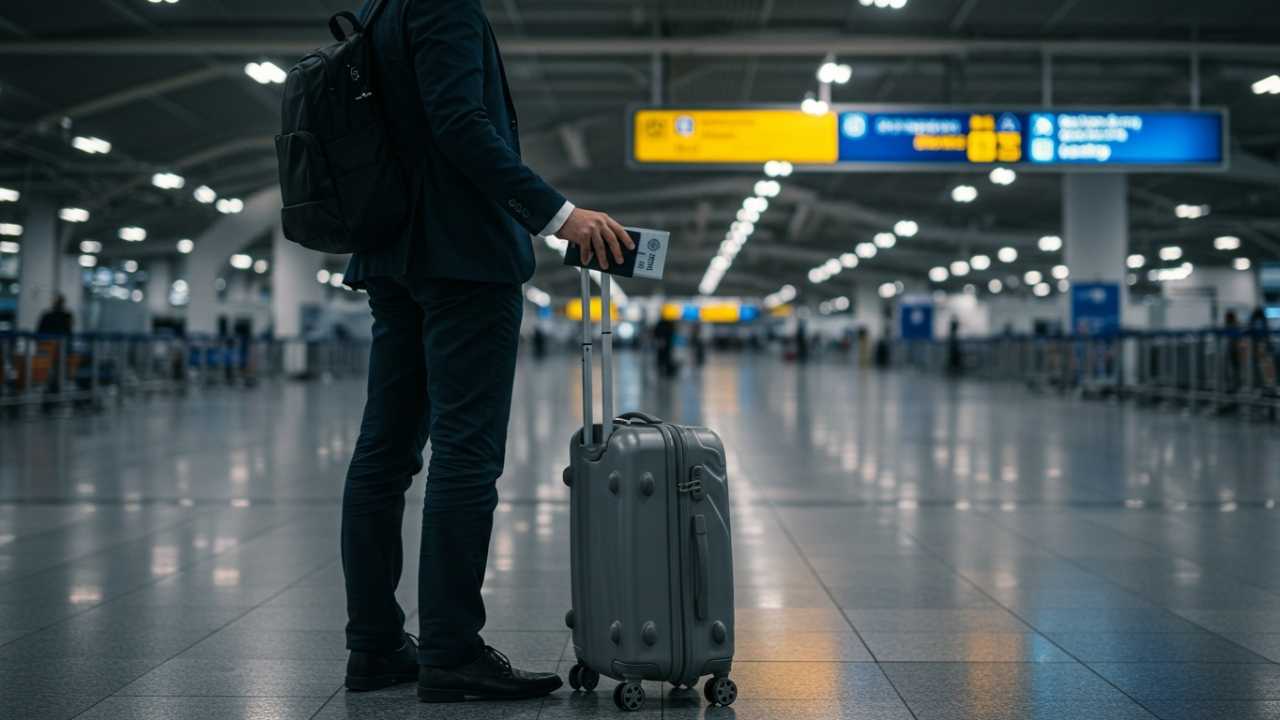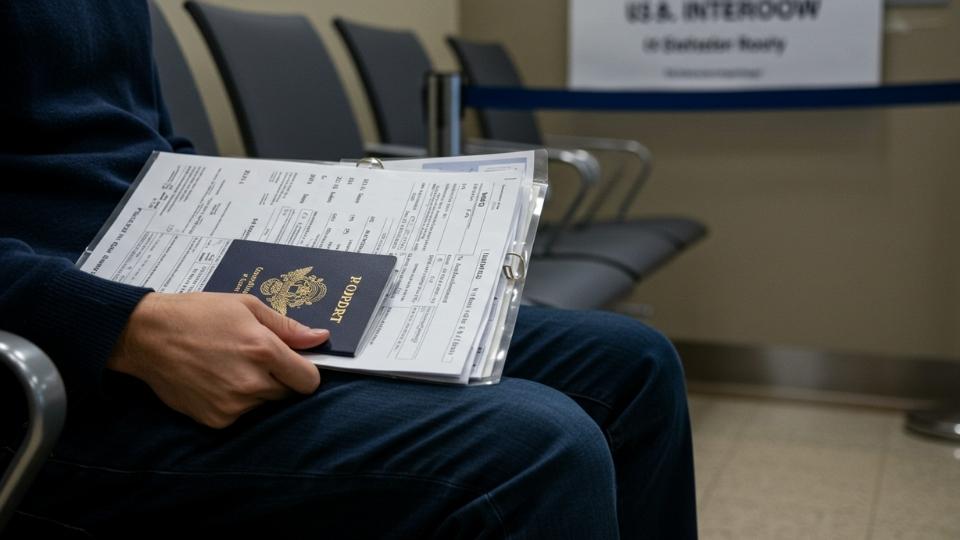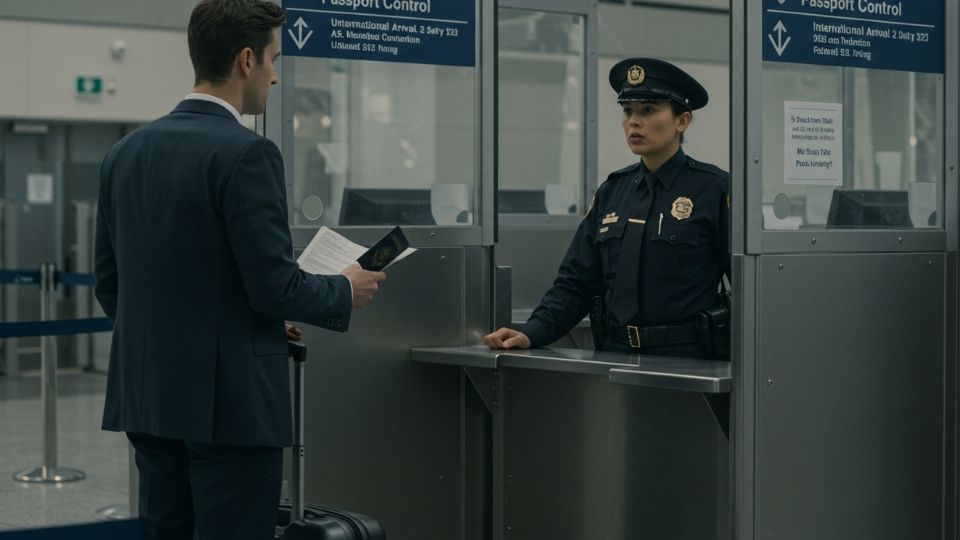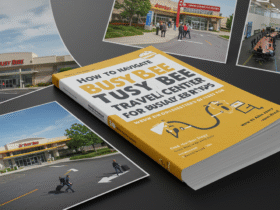When I recollect the first instance where I aided someone in applying for a business visa for the USA, I can’t quite forget the expression etched on their face. It included a blend of tension and hope as well as a hint of being flustered. Perhaps, at this exact moment, you are wearing the same expression. Like you, many individuals might be perusing government sites trying to navigate the many forms, procedures, regulations, and policies.
I must say, it is nearly impossible to apply for a business visa for the U.S. without assistance, which is why I am more than willing to help you. Someone should have done the same for us when we first attempted this process, but you and I will attempt to tackle this problem together in the most straightforward and conversational manner possible.
Understanding What This Visa Actually Is Before You Dive In
Hold your horses before picking up your B-1 visa application forms or booking an appointment for an interview. The very first thing to do is wrap your head around the concept of business visas, which are pretty much talking about B-1 visas. This particular visa fits individuals who intend to travel temporarily for ‘business’ like an Exec Team Member, a startup founder, or a client representative.
Basically, you are coming to the U.S. for purposes like attending business meetings, conferences, office visits, negotiations, etc. What is excluded, however, is employment by an American firm or receiving a salary from the United States. If you are planning to accept a relocation offer, then this isn’t for you.
You are expected to perform the business activities outlined in your plan under this B-1, after which you return to your home country, which is an easier task than it sounds. The promise may seem easy, but the government of the United States is far from accepting your word. Your plans and preparations come into play. That is the next step we will be walking through.
Making Sure This Is the Visa You Actually Need
You’ll be surprised to learn that a large number of people begin the application process without considering the most crucial question – “Is this the visa I should apply for?” Let’s answer that right now. Ask yourself: Are you traveling to the U.S. for only meetings or do you plan on representing your business? Is your stay for only a couple of days or at most a few weeks? Is your salary emanating from your home country during this trip? Do you expect to head back immediately?
If you did, then B-1 visa will most likely meet your needs. But if you think your situation is more complex—like if you are looking to take up a temporary position, intern, or study while there—then we need to talk about something completely different. And that’s perfectly fine. However, for the purpose of this conversation, I choose to focus on the people who are traveling purely for business.
Starting the Process: The Part That Feels Harder Than It Is
Here is where most people experience a mental block: dealing with the forms, the pictures, and the perplexing websites. I have witnessed small business owners, and even some top-level executives, be utterly bewildered by the nitty-gritties of it all. And the reality is—yes, the initial stages involve a lot of paperwork—but everything is doable. The first step is completing the DS-160 form, which is conveniently available online. This is the form in which you provide all necessary details regarding your trip, occupation, educational background, and future plans to the US government.
I’ve witnessed participants neglect the preliminary steps and paying for them later. Personally, I recommend pacing oneself online with the DS-160 form. Honesty is necessary, and so is clarity, and you should definitely verify the answers put forth.
Every answer provided is final once the form is submitted. If any answer is incorrect—even if it’s just a date or a name spelling—everything could be severely delayed or even worse, result in a denial. So, here, slow actually means fast. With completion comes the confirmation page with a barcode, which functions as a pass for what comes next.
Setting Up the Interview: The Step Where It Feels Real
After submitting the form, the next step is to pay the visa fee, currently set at $185 but is subject to change. Payment will be made through the U.S. embassy appointment website in your country, and afterward, you will be able to schedule your interview. This is the moment that usually stalls people. The thought of face-to-face interaction with a U.S. official, attempting to clarify your travel intentions within a limited timeframe, even puts self-assured individuals on edge.
However, fear should be the last of your worries. Preparation is key. The appointment is where you’ll bring all your documents: passport, DS-160 confirmation, receipt, and any papers supporting your travel plans. If you have an invitation letter from a U.S. business, bring it. If you have a job letter from your company stating that you will return post trip, include that too. Ultimately, the goal is to demonstrate preparation and honesty, ensuring officials know you have no intention of overextending your visit.
Getting Interview-Ready Without Driving Yourself Crazy
The only thing you need to bring to the interview besides documents is your story. And no, it’s not a speech. It’s the actual narrative of who you are, what you do, why are you going to the U.S., and what do you intend to do after wrapping up your business.
While preparing a colleague for a practice interview, I didn’t help her with lengthy rehearsed answers—rather, we worked on concise, truthful responses. The officers are not trying to puzzle you. They simply want to make a quick assessment if your trip, in fact, makes sense.
You do not have to wear a suit, but put on something professional. You do not have to speak perfect English, but respond and articulate clearly. Remain calm. Show the real you. Should they choose to ask questions, simply tell them why you’re doing something and explain. If your documents corroborate with what you say, everything will be okay and that is a crucial detail most people miss: it’s not about perfection, it’s about preparation.
What Happens Next: Approvals, Delays, and Real-Life Waiting
If all things go well at the interview then the officer might suggest your visa is approved. That is quite an experience. They will take your passport, put a stamp in it, and send it back to you via courier or you pick it up at their center. That section can last a few days or weeks based on where you live. And if they tell you your application requires administrative processing then nothing to panic about. That just indicates something in your history or documents is needing extra verification.
Now, if you are denied, which is a possibility, it is crucial to comprehend the reasons. Perhaps your answers were not that well perceived. Maybe your papers did not provide sufficient proof. Possibly the officer just did not seem to believe that you would come back. It is definitely not the worst news in the world. If you prepare yourself better, you can keep trying later. However, let’s put our effort towards getting that approval and plan for what comes after.
When You Arrive in the U.S.: What You Should Expect at the Airport
The visa issued on your passport allows you to present at the border; however, the officer stationed at the airport determines your length of stay. That is an aspect you should take note of. You might possess 10 years visa, but your permitted stay could fluctuate from 30 days to 60 days to even 6 months. It all depends on your intent and what you inform them during your entrance.
When you disembark from the flight, you will clear customs first. An officer shall inquire for what reason you are visiting. Remember, stick to the simple and answer straightforward.” Tell them what business you’re here for, where you’ll be staying, and when you plan to leave. Just pull out the supporting documents, if you have any, like your return flight, hotel reservation, and meeting schedule.
This is one of the moments when I like to warn people against jokes, casual approach or off-script improvisation. Show respect, be polite, snap the phrase in only a few words, and be on your way. The officer will place a stamp on your passport showing the date of entry and the date you’re required to leave. This leaves you with the range – mark it, remember it, and strictly adhere to it.
Following the Rules Once You’re in the Country
Once you cross the airport welcome gate and check-in, it’s easy to feel like the hard part is over. This is actually the stage at which your personal responsibility begins. You are currently on a B-1 visa, which categorically prevents you from taking a job, working for a U.S. company, or enrolling in any study program that awards academic credits. You are in the country for business, with a predetermined limit on the duration of your stay, which starts as soon as you conclude your purpose.
In my experience, people never cease to amaze me. One business traveler took a job as a paid speaker, and the employer for that job led to hiring problems down the line. Another traveler stayed an unreasonable amount of extra time in an attempt to “finish” a self-constructed business project. Both ended up bearing the brunt of their uncharacteristic choices when applying later.
Don’t let this unfortunate choice happen to you. As your own worst enemy, be as unforgiving as possible. Even when your business commitments end, you must still ensure your departure is on time. For those looking to extend their stay out of mere assumption, consulting an immigration lawyer beforehand is imperative.
What You Learn From the Process—and Why It’s Worth It
I will not conceal the truth. The process of applying for a business visa to the U.S. unarguably has its set of challenges. It can be cumbersome. But when done correctly, you definitely gain something of immense value. You become clear about your own plans. You master the art of goal oriented explanations. You become professional, disciplined, and more meticulous. For anyone looking to scale their business operations globally, those traits will be repeatedly and constantly needed.
People who I have assisted in the past have described their experiences traveling to the U.S as confidently as going there multiple times after obtaining their first visa. That initial experience builds a solid foundation from which they still draw upon. This admonishes the misconception that it’s solely a travel document. It demonstrates your capability to prepare, communicate, and follow through, which is beyond the realm of immigration processes but are essential skills to possess.
My Opinion on How To Apply For A Business Visa To The USA
Reaching the end of our business today’s talk and hoping now things feel a little less scary. Came here wondering how to apply for business visa to USA, now you know what it takes. Understanding the process from start to finish, every single form till they put the final stamp.
And as you have heard it all, you can tear it into pieces. At least you can be sure it doesn’t sound like a government guide, but real conversation between two people who have lived through the uncertainty, and who believe in walking all the way and getting things done the right way.
The steps might appear long, and the rules might seem rigid, but the reward is worth it. You open the door to business opportunities, partnerships, growth and trust globally. So go ahead start that application, fill out that form, and schedule that interview. You have the knowledge now. And if you concentrate, do not lie, and do not fidget, then everything needed to sail through will ensure success.

















Leave a Reply